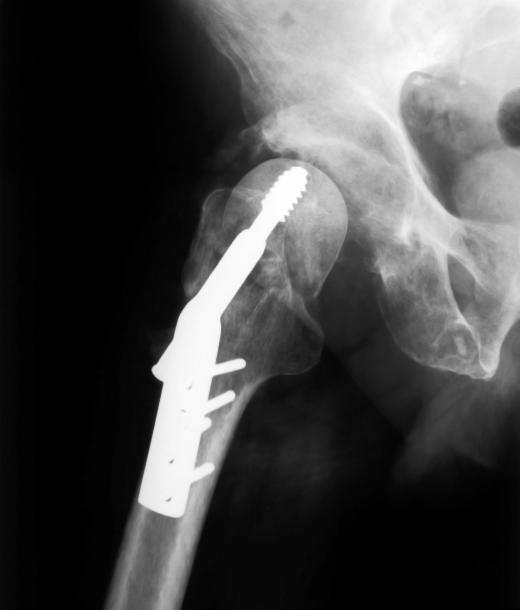A titanium rod is a rod made of titanium; the rods can be composed of pure titanium or can also be a mixture of pure titanium and other alloys such as aluminum or vanadium. Such rods are most commonly used in orthopedic surgeries. The ends of titanium rods can be threaded or hooked depending on what is needed at the time for the patient. Typically, the surface of titanium rods is covered with or treated with a substance that will encourage the rods to fuse with the bone better once it is implanted into the body.
The specific titanium rod that is used for medical applications typically depends on the injuries of the patient and how stable or flexible the rod must be. When strength is the sole factor, such as when replacing a bone in the leg with a titanium rod, orthopedic surgeons will often use rods made of titanium alloys. Since pure titanium is more flexible than rods made of titanium alloys, these types of rods are often used in patients where the rod being inserted must be formed into a shape before implantation. Titanium alloy rods are typically used in most patients. There is a high friction rate associated with these types of rods though, so any rubbing against other titanium alloy rods must be avoided at all costs.

For children who require orthopedic surgery, an expanding titanium rod is normally used. This is a rod that will be attached at the joints and will stretch with the bone as the child grows. Although these are the best types of rods to use for children who are still growing, the expanding titanium rod can only be used to replace large bones in the body such as a leg bone. Using an expanding rod will also reduce the occurrence of subsequent surgeries since the rod will grow with the child to a certain extent.
Even though expanding rods are used whenever they can be, sometimes the use of non-expanding rods is necessary. If non-expanding titanium rods are used in any type of surgery where the person is still growing, it will be necessary to have repeat surgeries to replace the rod. If the rod is not replaced through subsequent surgeries this could stunt the growth of the child as the rod will not permit his or her body to grow naturally.
